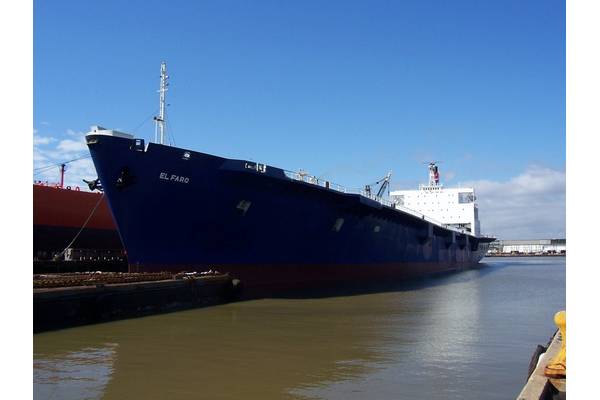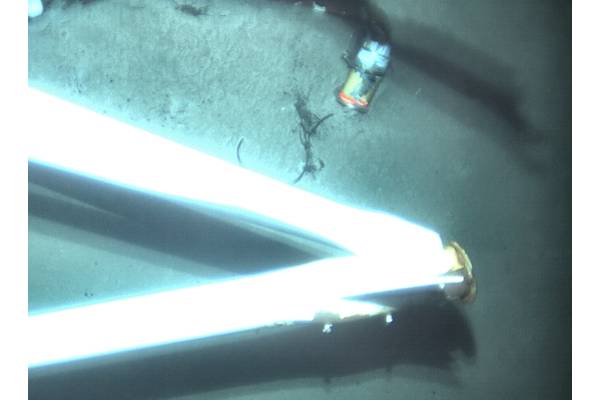Another Mission Needed to Recover El Faro’s VDR
Posted by Eric Haun
April 27, 2016

El Faro (File photo: Tote)

Voyage data recorder next to El Faro's mast on ocean floor (Photo: NTSB)
The investigative team who located the El Faro’s voyage data recorder (VDR) has determined that another mission will be necessary in order to retrieve the device, which may contain recorded conversations and sounds from the ship’s navigation bridge, potentially helping investigators to piece together the sequence of events that led to the cargo ship’s sinking during Hurricane Joaquin in
October 2015.
The team of investigators and scientists aboard research vessel Atlantis collaborated with investigators at the National Transportation Safety Board (NTSB) lab in Washington and determined that given the VDR’s proximity to the mast and other obstructions, recovery of the VDR cannot be accomplished with the equipment currently available on the ship, the NTSB said.
The VDR was located
April 26 in 15,000 feet of water, about 41 miles northeast of Acklins and Crooked Islands, Bahamas.
Video and photographic images released by the NTSB showed that the VDR appears to be attached to a steel beam connected to the mast structure.
“Now that we have been able to see just how the VDR is oriented relative to the mast structure, it’s clear that we’re going to need specialized deep-water salvage recovery equipment in order to bring it up,” said Brian Curtis, Acting Director of the NTSB Office of Marine Safety. “Extracting a recorder capsule attached to a four-ton mast under 15,000 feet of water presents formidable challenges, but we’re going to do everything that is technically feasible to get that recorder into our lab.”
A timeframe for the launch of the VDR retrieval effort has not been confirmed, though the NTSB said investigators hope the mission can be completed in the next several months.
The current mission will continue to gather imagery of the El Faro hull and debris field until successfully completed. Atlantis is expected to depart the site April 30 and arrive in Woods Hole, Mass., May 5.
In October and
November of 2015, the NTSB conducted an initial search mission to locate the sunken vessel and conduct an initial survey of the debris field. The data collected during that mission were used by investigators to plot “high probability” search zones for the current mission. Those data proved reliable and resulted in the location of the mast and VDR in one of the zones.





